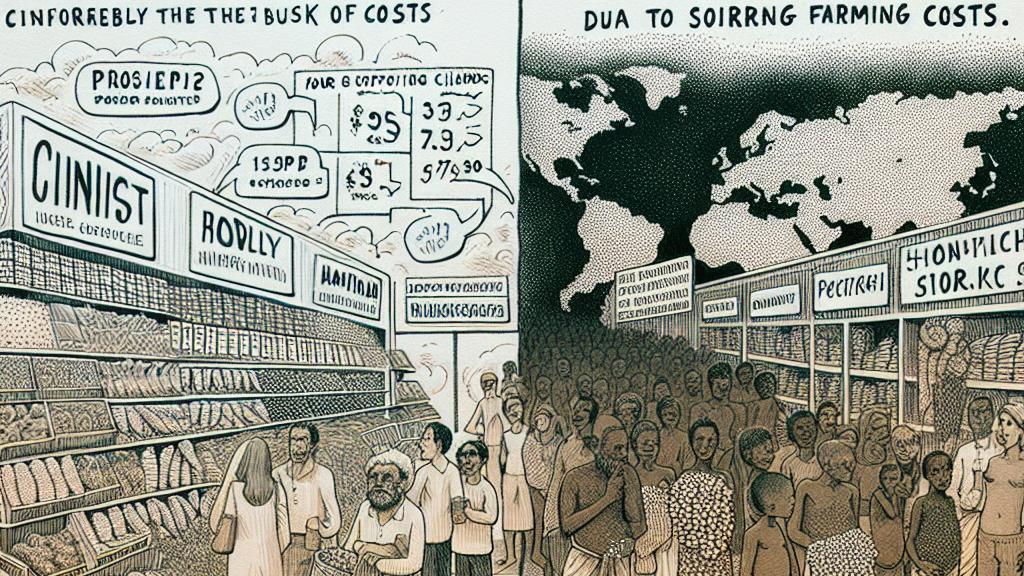How Climate Policies Change Food Prices in Rich and Poor Countries
Overview
- Wealthy nations effectively buffer fluctuations in food prices.
- Low-income countries face dire consequences from rising costs.
- Climate policies risk deepening food insecurity for vulnerable populations.

The Impact of Climate Policies on Food Pricing
A striking analysis from the Potsdam Institute for Climate Impact Research uncovers a startling reality: agricultural climate policies affect food prices differently across economic divides. In prosperous countries like the United States and Germany, consumers typically pay a significant amount for the processing, transport, and marketing of their food. This means that when climate initiatives drive up farmer prices, consumers may barely notice it at the register, thanks to the cushioning effect of long supply chains. Take, for instance, a simple loaf of bread. While the cost of wheat may rise, the price people pay reflects minimal changes because a majority goes toward production and transport. Conversely, in low-income regions like Sub-Saharan Africa, where farming costs are higher and account for more of the total food price, the impact is alarming. Research indicates that by 2050, food prices in these countries could soar as much as 2.45 times, making essential items like grains and vegetables increasingly unaffordable for struggling families, who are already grappling with food insecurity.
The Growing Divide Between Rich and Poor Nations
The widening chasm between rich and poor nations is glaringly evident in how their food systems operate. In wealthier countries, farmers typically see less than 25% of what consumers shell out for food. In contrast, farmers in less affluent regions often retain over 70% of the revenue. This essential difference showcases the stark reality faced by societies at opposite ends of the economic spectrum. Affluent consumers can indulge in an array of processed foods, where rising raw ingredient costs are often absorbed by marketing and distribution layers. For instance, countless families opt for inexpensive fast food, blissfully unaware that they are insulated from immediate price shocks. Meanwhile, in low-income regions, families often feel the dire consequences of rising agricultural costs first-hand. An increase of just a few cents on the price of staple foods can mean that many struggle to put healthy meals on the table. This situation not only heightens the risk of food insecurity but also amplifies the social disparities between the wealthy and the poor.
Potential Solutions for Food Price Challenges
Despite the pressing challenges posed by rising food prices, there remains a beacon of hope on the horizon. Studies suggest that proceeds from carbon pricing could effectively bolster low-income households, helping them tackle growing food costs. Imagine this: if families received targeted financial aid to combat rising grocery bills, they could keep their kitchen stocked with fresh, nutritious foods. This type of support could make a world of difference, allowing them to navigate financial pressures without sacrificing health. It’s imperative that climate policies are designed not just to reduce emissions but also to support both producers and consumers during this transition. Moreover, by engaging communities, local governments, and agricultural stakeholders in these discussions, we can create a framework that ensures food remains accessible for everyone. Even though the journey toward sustainable food systems involves navigating steep challenges, investing in this direction is essential for a secure and healthy future.

Loading...